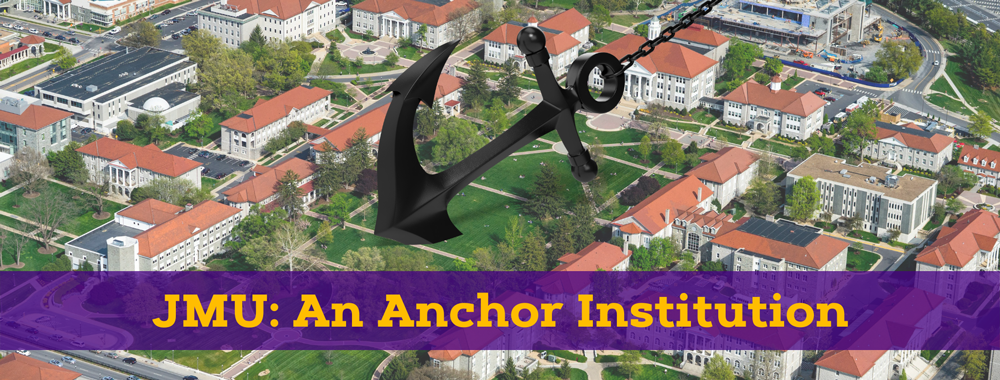JMU - Community Engaged Anchor Institution
School of Professional & Continuing Education (SPCE)
Professional & Continuing Education’s Outreach & Engagement team, in conjunction with the University Economic Development Council (UEDC), and Steve Grande through his work in Community Service Learning and as co-champion of JMU’s Key Goal #10 have been hard at work this semester researching what it means to be an Anchor Institution and gathering information to demonstrate that James Madison is an active Anchor Institution for Harrisonburg and the surrounding localities. In our university’s strategic plan, President Alger has outlined 11 key goals to focus on for the next six years, and one of those goals is that JMU serves the region as an Anchor Institution. Due to their longevity in a community, colleges and universities are inherently Anchor Institutions. However, in order to be a community-engaged Anchor Institution, universities must be true to the anchor mission which is to “consciously and strategically apply their long-term, place-based economic power, in combination with their human and intellectual resources, to better the welfare of the communities in which they reside” (Hodges & Dubb, 2012, pp. XIX-XX).
Our research has focused on two primary sources, The Road Half Traveled: University Engagement at a Crossroads by Rita Hodges and Steve Dubb (2012) and The Democracy Collaborative’s publication on “Higher Education’s Anchor Mission: Measuring Place-Based Engagement” by Emily Sladek, which features the Anchor Dashboard Learning Cohort (2017). We have used both sources for evaluation in crafting surveys to send out to various offices around campus to gather information on JMU’s current efforts.
The first survey, based off of "The Road Half Traveled", focused on six main criteria – comprehensive neighborhood revitalization, community economic development, local capacity building, public school & health partnerships, academic engagement, and multi-anchor/regional partnerships – and went to University faculty and administrators who are members of the UEDC. The second survey from the Democracy Collaborative provided us with questions to measure JMU’s engagement, which we more pointedly sent to offices on campus who could provide us with the necessary information. The questions covered a variety of topics including budgets on campus dedicated to community engagement and development, minority and local hires in staff positions, purchasing, regional partnerships, and many more.
The Outreach & Engagement team hopes to synthesize and interpret the data in order to confirm that JMU is a community-engaged Anchor Institution. We plan to present the findings to President Alger and other university leadership early next semester for their input.
